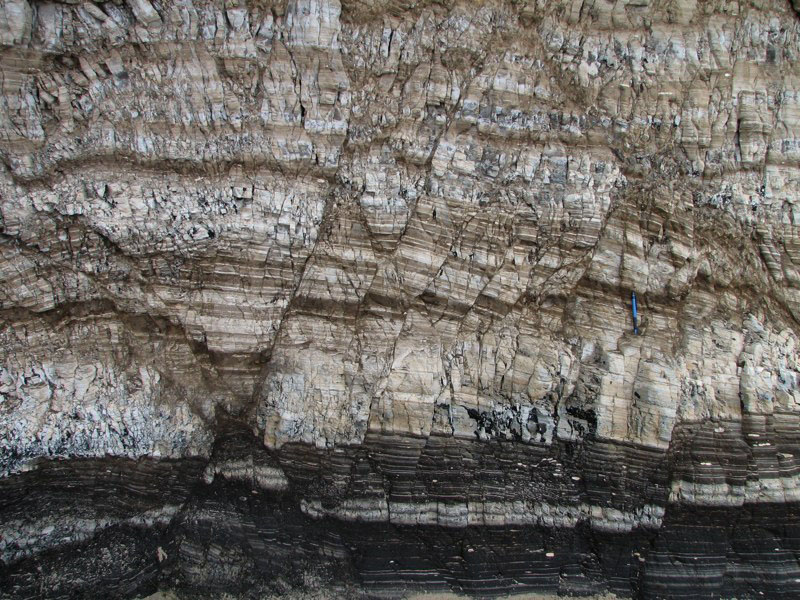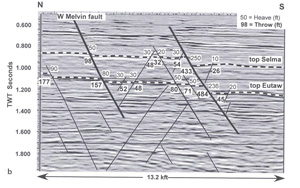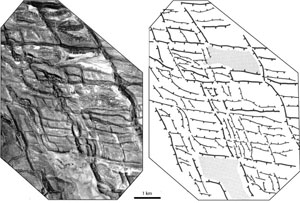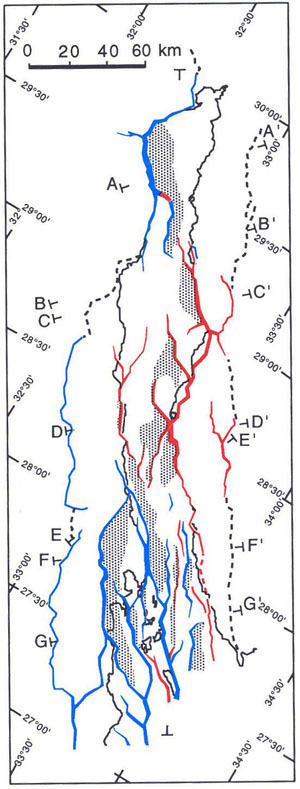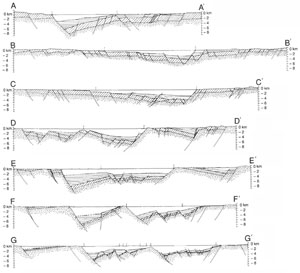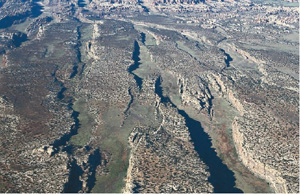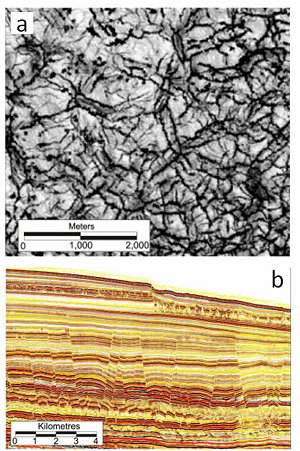| ||||||||||||
|
|
||||||||||||
|
|
||||||||||||
| Multiple Normal Fault Sets | ||||||||||||
|
More than other fault types, multiple normal fault patterns are better known in the literature as well as in casual web sites on faulting. One of the reasons for these abundant examples of normal fault patterns is the fact that it is easier to recognize throws in sections in field exposures and in seismic images. The first example of a normal fault network is in sandstone on a river bank (Figure 1). Thanks to a pair of mudstone layers at two levels, the fault traces are readily traceable (mapped on the photo mosaic) and the throws are easily measurable. The two sets make an intersection angle of about 60 to 70 degrees. Mutual abutting relationships (on the right panel) indicate that the two sets are contemporaneous. The second example occurs on a vertical cliff face of siliceous shale (Figure 2). Thin multi-colored beds show the fault traces and throws quite well.
Figure 3 displays two normal fault sets in a seismic section. Two of the largest faults with throws of about 50 and 150 meters in the section were also detected by boreholes. Notice the spatial distribution of the N-dipping set of smaller faults between the more prominent S-dipping set making a ladder-like pattern. Multiple normal fault patterns with more than two sets occur in broadly deformed regions. Here we use two well-known rifts as an example. The picture-perfect pattern from Afar (Figure 4) displays hierarchical occurrence of two pairs of normal faults in two trace orientations and with mutual abutting relations. Each pair has two sets with opposite dip-direction. This pattern with orthorhombic symmetry is quite typical. For additional examples, please see the 'Multiple Shear Band Sets.' The other example is located on the eastern side of the Gulf of Suez displaying a more complex normal fault pattern with considerable spatial variation (Figure 5). In spite of this complex map pattern, the interpreted cross section patterns appear to be quite simple forming a series of horst and grabens (Figure 6). Horsts and grabens are structural highs and lows, respectively, which, under certain conditions controlled by erosional resistance of rock units, provide spectacular geomorphic scenes as shown in Figure 7 which is an aerial photograph of the Canyonlands in SE Utah.
One of the most intriguing multiple sets of normal faults is that of the so-called polygonal fault systems occurring in fine-grained sediments (Figure 8). They often are confined within distinct sequences and their pattern varies as a function of their degree of development. | ||||||||||||
| Reference: |
||||||||||||
| Aydin, A., 1973 Cartwright, J.A., 2011 Christiansen, E.H., 2009 Groshong, R.H., Jr, 2006 Kronberg, P., 1995 Patton, T.L., Moustafa, A.R., Nelson, R.A., Abdine, S.A., 1994 |
||||||||||||
|
Readme | About Us | Acknowledgement | How to Cite | Terms of Use | Ⓒ Rock Fracture Knowledgebase |
||||||||||||

